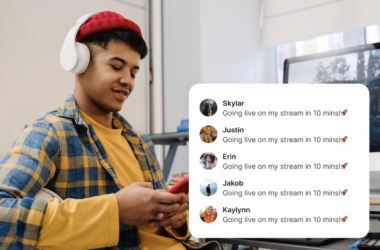Last Updated on: 25th September 2024, 08:20 am
Investing has long proven to be one of the best ways to build wealth and reach key financial goals such as retirement. However, many individuals unnecessarily keep themselves from maximizing their potential returns because they mistakenly believe they need to have accumulated a certain level of wealth to begin building a portfolio.
I recently had the chance to speak with Ramsey Brock, president of Brock Asset Management about when the right time to begin building an investment portfolio is — and as his insights reveal, the best time is right now, even if you only have a little to invest.
1. You Can Start With a Small Investment
“The most important thing people need to realize is that they don’t need to have a huge amount to invest to begin building their investment portfolio,” Brock explains.
“You can begin making small investments with just $100 or less. As long as you are investing money that you can afford — as in not pulling it from the funds you need to cover your day to day living expenses — those small investments are worth doing. It may not seem like much, but it really can add up over time.”
When starting with small investment amounts, Brock advises that investors pay attention to the fees associated with their portfolio. Fixed fees and transaction fees associated with your account should be minimal (or non-existent) when investing small amounts.
Fortunately, a wide range of investing tools and portfolio options have enabled more people to begin investing at small levels, with straightforward investing options that help simplify the process.
2. Starting Early Unlocks the Power of Compound Interest
More important than the fact that investors have the ability to start with small investments are the reasons behind trying to start building an investment portfolio as early a possible: namely, compound interest.
“Compound interest is the most important reason you should start investing early, even if you don’t have a lot to invest,” Brock says. “Essentially, compound interest means that your investments will generate interest on top of the gains they’ve already accumulated the longer you hold that position in your portfolio. If you invest $100 and never do anything with it again but get a five percent annual rate of return, that initial $100 investment would become $430 after thirty years. Regular contributions to your portfolio, no matter how small, expand that growth potential even more.”
While returns are never guaranteed with any investment, Brock notes that conservative investments, such as portfolios that track index funds, can be a safe bet for new investors with a lower risk tolerance. The average rate of return for the S&P 500 between 1957 and 2023 was 10.26%, a good return that generates more wealth the longer you generate compound interest.
3. You Can Build a Budget That Works for You
In line with the fact that you can start building an investment portfolio with small investments, Brock is quick to point out that new investors can combine sound investing and budgeting practices to create a system that works for their individual situation.
“When you start with small investments, you can actually use your desire to grow an investment portfolio to improve your budgeting,” Brock says. “Carefully evaluating your current financial situation and monthly budget can help you identify areas where you can reduce your spending so that you have a little extra to put into your investment portfolio. You might find that you have more room to make investments than you would have thought!”
Regardless of how much money you currently earn or what your other expenses look like, careful budgeting will allow you to determine an amount that you can afford to invest in your portfolio on a monthly basis.
4. Starting Small Helps You Learn
Finally, one overlooked advantage of starting investing when you only have a small amount to invest is that it creates a “safer” opportunity for learning sound investment strategies.
“You don’t want to start by investing $10,000, only to put all that money in an unbalanced, high-risk portfolio and lose everything,” Brock says. “Those kinds of lessons are a lot easier to learn and bounce back from when you are only investing a small amount. The best way to learn is by doing. By starting with smaller investments, you can gain a better understanding of your risk tolerance, how actively you wish to manage your portfolio and other key lessons that will serve you well when you have more to invest.”
For his part, Brock recommends a more conservative, long-term approach that focuses on making consistent contributions without concern for timing the market. But by starting small, he says, investors have the opportunity to determine what ultimately works best for their situation and preferences.
Start Investing Today
As Brock’s insights reveal, the best thing any investor can do is start building an investment portfolio today. Even if you only have $100 that you can invest, starting early will give your money more time to work for you.
As your salary increases and you pay off debt, you can begin investing more — but by giving yourself a head start now, you can make the most of your investment opportunities.







